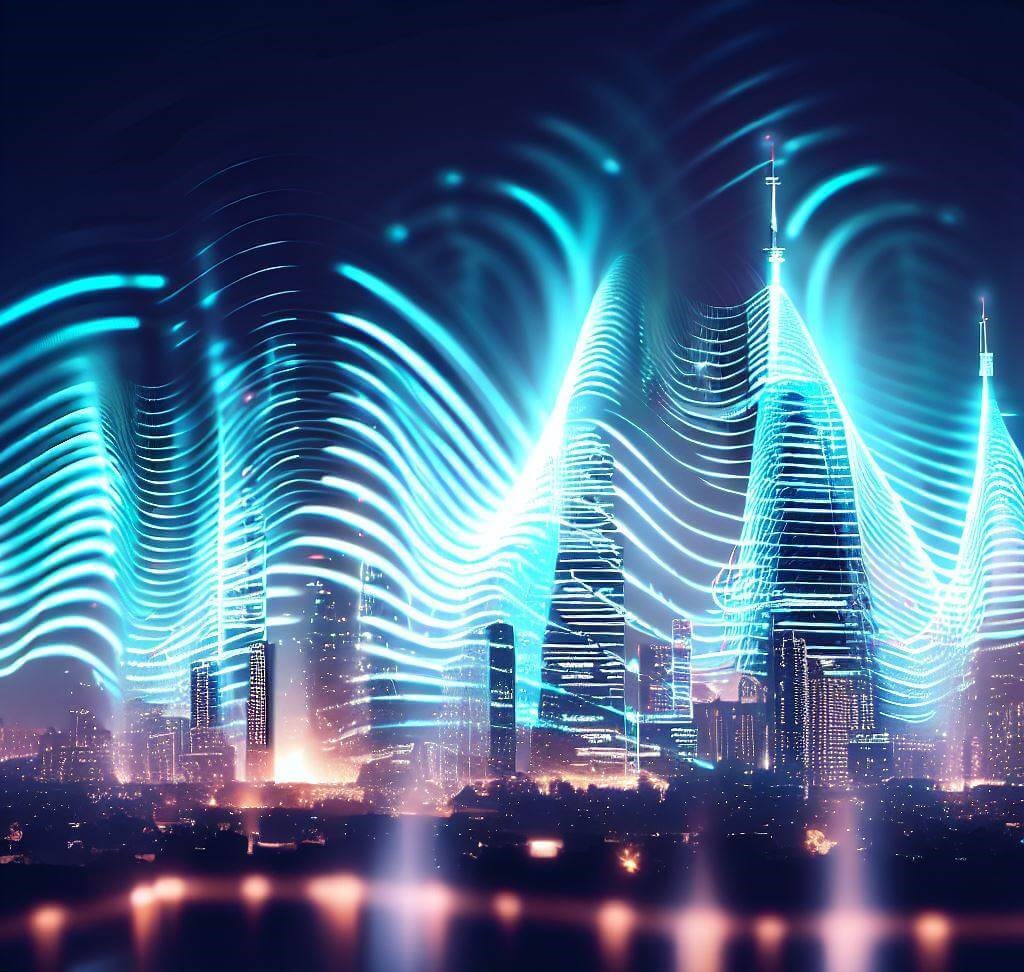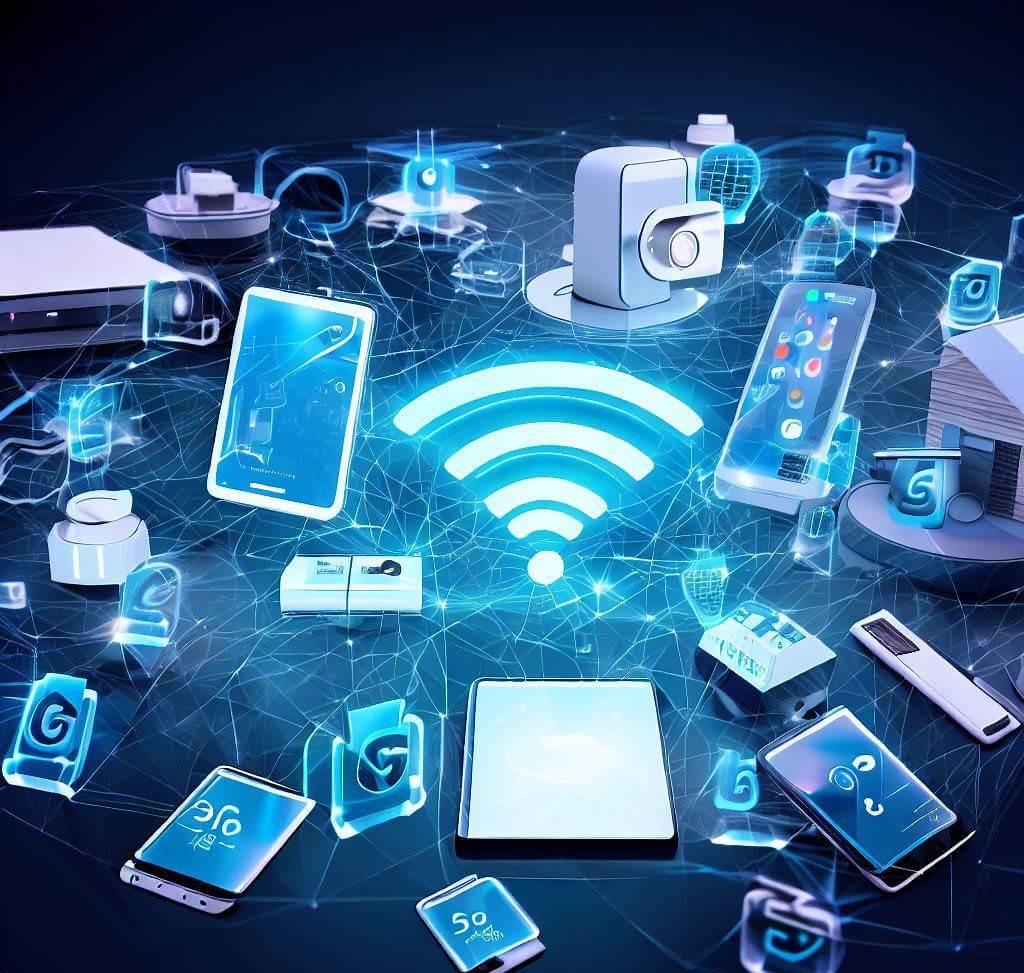Unveiling the Future: A Comprehensive Guide to 5G and EMF
As we catapult ourselves into the future, two key players—5G networks and electromagnetic fields (EMF)—are turning the wheels of a technological revolution. Why is this so consequential? Because these elements are foundational pillars for the next wave of innovation and advancement. Whether you’re a tech aficionado, a concerned citizen, or simply someone who doesn’t want to be left behind, understanding these technologies is paramount. So, fasten your seat belts as we delve deep into what 5G and EMF really mean, their future impact, their benefits and pitfalls, and how you can gear up for a world increasingly governed by these technological marvels.
What is 5G?
The Evolution from 4G to 5G
As we transition from 4G to 5G, it’s akin to moving from black-and-white television to full-color, high-definition display. The ‘G’ stands for ‘generation,’ signifying this is the fifth iteration of cellular technology. 4G paved the way for many of the online conveniences we enjoy today—like streaming video and using cloud services on-the-go. But 5G takes it up several notches. So, what’s the big deal? For starters, we are looking at 100 times faster data speeds compared to 4G, making the latter look like a snail crawling along the information superhighway.
5G Networks and Their Advantages
The advent of 5G will usher in numerous advantages that could transform multiple sectors, from healthcare and education to manufacturing and logistics. Here are some quick facts about the boons of 5G:
- Pros:
- Faster Speed: Download an HD movie in seconds instead of minutes.
- Higher Reliability: Say goodbye to those annoying ‘buffering’ moments.
- Lower Latency: Real-time data transfer becomes more efficient, critical for applications like remote surgery or autonomous driving.
- Cons:
- Higher Costs: Upgrading to 5G-compatible devices and plans may be expensive.
- Infrastructure Requirements: 5G needs new antennas and infrastructure, which can be resource-intensive.
So, is 5G just a ‘faster’ internet? Not at all! Its lower latency can allow doctors to perform surgeries from thousands of miles away. The higher speeds could make it possible to download entire educational courses in seconds. Its reliability might ensure that autonomous vehicles can communicate with each other in real-time, thereby reducing accidents.

What is EMF?
Understanding EMF
Electromagnetic fields (EMF) are not a new concept, but their prominence in our daily lives has never been more salient. Essentially, EMFs are invisible areas of energy, often referred to as radiation, that are associated with the use of electrical power and various forms of natural and artificial lighting. So, why should you care? EMFs surround us—from the phone in your pocket to the microwave in your kitchen—and understanding them can help us use technology more safely.
The Future of 5G: A New Horizon of Possibilities
The development of 5G is more than just an upgrade; it’s a revolutionary leap that will catalyze advancements across numerous sectors. Here, we break down some key areas where 5G is set to make a seismic impact, fortified with research and data.
5G and IoT (Internet of Things)
The Internet of Things (IoT) is one of the most buzzed-about concepts right now. According to Gartner, there will be 25.1 billion connected things by 2025. But why is 5G critical for IoT? The answer is simple: latency and bandwidth. How does that change the game? 5G promises latency as low as 1 millisecond, compared to 4G’s average of around 50 milliseconds. This enables real-time data processing, making it feasible for your smart fridge to order milk when you’re running low, without you lifting a finger.
5G and Autonomous Vehicles
Imagine a world where self-driving cars communicate with each other, pedestrians, and the infrastructure around them. It may sound like science fiction, but it’s on the horizon, thanks in part to 5G. McKinsey & Company estimates that the automotive industry could gain a potential value of $600 billion to $800 billion by 2030 through 5G-enabled use cases. The low latency and high-speed data transfer capabilities of 5G are integral for self-driving cars to make real-time, life-critical decisions.
5G in Healthcare
According to a report by IHS Markit, 5G could enable more than $1 trillion in products and services for the healthcare sector by 2035. Telemedicine, for instance, could see revolutionary changes with high-definition, lag-free video consultations. Remote surgery, a concept that was once within the realm of fantasy, could become a reality. With haptic feedback and near-zero latency, a surgeon in New York could perform an operation on a patient in a remote village halfway across the globe.
5G in Remote Work
The COVID-19 pandemic has shown us the importance of efficient remote working solutions. With 5G, the era of laggy video calls and slow file downloads could be a thing of the past. A study by Ericsson states that 5G business-to-business market value could reach $700 billion by 2030, and remote work solutions are a significant part of this equation.
EMF Concerns: What You Need to Know
While 5G and EMF are propelling us into a future of unparalleled connectivity and convenience, they are not without their share of concerns. In this section, we’ll unpack some of the most pressing issues surrounding EMF exposure.

Health Implications
Concerns around the health effects of EMF exposure have been around for years. According to the World Health Organization (WHO), high levels of EMF can trigger adverse health conditions such as headaches and sleep disturbances. While there is no conclusive evidence linking low-level EMFs (like those from cell phones) to severe health issues, research is ongoing.
So, is there a cause for alarm? At present, the scientific consensus, according to organizations like the American Cancer Society, suggests that low-level EMF exposure poses minimal health risks. However, it’s important to keep in mind that studies are ongoing, and findings could change as more data is collected.
Environmental Concerns
EMFs not only have the potential to impact human health but also the environment around us. According to a study published in the journal “Science of the Total Environment,” higher levels of EMF can adversely affect animal behavior and even plant health.
Are we disregarding the planet for the sake of advancement? While technology companies are working on sustainable solutions, the environmental implications of EMF cannot be overlooked. Continued research and responsible usage are key to mitigating potential risks.
Guarding the Fort: EMF Protection Strategies
As EMF exposure becomes increasingly prevalent, understanding how to protect oneself is crucial. The market is flooded with a plethora of EMF protection products and strategies, but it’s essential to separate the wheat from the chaff.
Shielding Materials
One common method is using shielding materials like curtains, wallpapers, or paint that contains metal particles. These materials can attenuate EMF to varying degrees.
EMF-Blocking Products
Devices like EMF shields for smartphones and laptops are widely advertised. However, their effectiveness is often debated. A study from the Environmental Health Trust suggests that while some of these products can reduce EMF exposure, they are not a catch-all solution.
Distance and Duration
A straightforward way to reduce EMF exposure is by increasing distance from EMF-emitting devices and minimizing usage duration. The intensity of EMF decreases exponentially with distance, which is a simple yet effective protection strategy.
But are these precautions necessary? Opinions are divided, but a ‘better safe than sorry’ approach may be warranted, especially until conclusive evidence on long-term EMF exposure is available.
Weighing the Scales: Pros and Cons of EMF Protection
EMF protection is a contentious issue, with compelling arguments on both sides of the spectrum. Here’s a breakdown:
- Pros:
- Risk Mitigation: Protective measures can reduce EMF exposure and potentially lower health risks.
- Peace of Mind: Knowing that you’re proactively protecting yourself can offer psychological benefits.
- Potential Health Gains: Some individuals report feeling better after implementing EMF protection measures.
- Cons:
- Financial Investment: Many EMF protection products can be expensive.
- Inconvenience: Constantly maintaining distance or using shielding materials can be cumbersome.
- Limited Scientific Backing: The effectiveness of many EMF protection products remains a subject of debate.
So, is it worth investing in EMF protection? It’s a personal choice, often influenced by your own understanding of the risks and your comfort level with existing scientific data.

Gearing Up for Tomorrow: How to Prepare for the 5G Future
As 5G becomes an integral part of our daily lives, adapting and preparing for this change is imperative. Here are some tips to get you 5G-ready:
Understand 5G Coverage
Before upgrading to a 5G-compatible device, check your area’s 5G coverage. Many telecom companies provide coverage maps on their websites.
5G-Compatible Devices
Most new smartphones now come 5G-enabled, but don’t overlook other devices like Wi-Fi routers or IoT gadgets that might need an upgrade to fully capitalize on 5G speeds.
Security Measures
With great speed comes greater responsibility. The potential for cyberattacks might increase with 5G. Investing in robust security software is advisable.
Is preparing for 5G a complicated process? Not necessarily, but it does require thoughtful consideration and possibly some investment in technology and security measures.
In The Know: What Experts Say
The development and implementation of 5G and EMF technologies have garnered significant attention from experts in various fields. Here’s what some of them have to say:
Dr. Steve Novella on EMF and Health Risks
Dr. Steve Novella, a clinical neurologist and assistant professor at Yale University School of Medicine, states that there is currently no solid evidence to suggest that low-level EMF poses any significant health risks. However, he also highlights the importance of ongoing research for a more comprehensive understanding.
FCC on 5G Safety
The Federal Communications Commission (FCC) in the United States mentions that all 5G technology follows the existing safety standards and that extensive research is being done to ensure it remains safe for public use.
Dr. Devra Davis on Environmental Effects
Dr. Devra Davis, the founder of the Environmental Health Trust, emphasizes the need for more research on the environmental impacts of EMF. She points out that some studies have shown adverse effects on animal behavior and plant health, though these are not yet conclusive.
So, where does this leave us? The expert consensus mostly leans toward the safety and efficacy of 5G and low-level EMF, but it also stresses the importance of ongoing studies to better understand long-term effects.
Summary and Next Steps
By now, you should have a rounded understanding of 5G and EMF technologies, their benefits, the associated concerns, and the protection strategies available. The key takeaway is that both technologies present remarkable advantages but also come with challenges that we must navigate wisely.
Next Steps:
- Educate Yourself: Stay up-to-date with the latest research.
- Evaluate Needs: If you’re considering EMF protection products, make sure to scrutinize their efficacy.
- Tech Upgrades: Ensure your devices are 5G-compatible to make the most of the technology.
- Security: Beef up cybersecurity measures to protect against potential risks.

Paving the Way: Final Words and Reflections
As we traverse the exciting but complex landscape of 5G and EMF technologies, staying informed and prepared is our best defense and our most reliable guide. The promise these technologies hold for transforming our lives is undeniable. However, embracing them fully entails grappling with the associated challenges, be they health-related, environmental, or otherwise.
FAQs
- What kinds of devices emit EMF?
Common devices include smartphones, Wi-Fi routers, microwaves, and even electric cars. - How fast can 5G really get?
In lab tests, 5G has reached speeds of up to 20 Gbps. However, real-world speeds are likely to be lower, depending on various factors like network congestion and signal strength. - Is it necessary to replace all my devices when switching to 5G?
Not necessarily. However, to make full use of 5G speeds, a 5G-compatible smartphone and router would be beneficial. - Are there any alternative ways to reduce EMF exposure?
Limiting screen time and keeping devices at a distance when not in use are simple yet effective ways to reduce EMF exposure. - Are the health risks of 5G and EMF scientifically proven?
As of now, the general scientific consensus does not indicate that low-level EMF or 5G poses significant health risks. However, research is ongoing, and this may change as new data becomes available.

